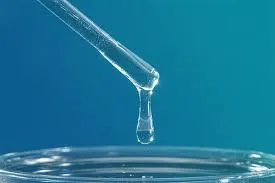
Dec . 07, 2024 10:09 Back to list
Exploring the Applications and Benefits of Hydroxypropyl Methyl Cellulose in Industry
Understanding Hydroxypropyl Methyl Cellulose Ether A Versatile Polymer
Hydroxypropyl Methyl Cellulose Ether (HPMC) is a cellulose derivative that has gained widespread appreciation in various industries due to its versatile properties and numerous applications. This chemically modified cellulose compound is produced through the reaction of cellulose with propylene oxide and methyl chloride, leading to a product that retains many of the beneficial characteristics of cellulose while acquiring unique features that make it suitable for a myriad of applications.
Composition and Structure
HPMC is a white, odorless, tasteless powder that is soluble in cold water and forms a viscous gel when dissolved. Its structure consists of hydroxypropyl groups and methyl ether groups attached to the cellulose backbone, which help to significantly enhance its solubility, thermal stability, and film-forming properties. The degree of substitution, which refers to the number of hydroxyl groups on the cellulose that have been replaced by hydroxypropyl and methyl groups, plays a crucial role in determining the properties of HPMC, including its viscosity and solubility.
Applications in Various Industries
1. Pharmaceuticals In the pharmaceutical industry, HPMC is used as a binding agent in tablet formulations, helping to ensure the even distribution of active ingredients. It also functions as a controlled-release agent, allowing for sustained release of medication over time. Additionally, HPMC is employed as a thickening agent in liquid formulations, improving the consistency of suspensions and emulsions.
2. Food Industry HPMC is recognized as a food additive and is often used as a thickener, stabilizer, and emulsifier. It contributes to the texture and mouthfeel of various products, including sauces, dressings, and dairy products. Importantly, HPMC is a vegetarian alternative to gelatin, making it suitable for a wider range of dietary preferences.
3. Construction In the construction sector, HPMC is frequently incorporated into cement-based products, such as mortars and plasters. Its water-retention properties help to improve workability and extend the open time of these materials, allowing for more efficient application and better bonding properties.
hydroxypropyl methyl cellulose ether

4. Cosmetics and Personal Care The cosmetic industry utilizes HPMC for its thickening and emulsifying properties. It is commonly found in creams, lotions, and hair care products, where it helps to stabilize formulations and enhance sensory characteristics.
5. Agriculture In agricultural practices, HPMC is used as a soil conditioner and a carrier for fertilizers and pesticides. Its ability to retain moisture improves the availability of nutrients to plants, thereby promoting healthier growth.
Benefits and Advantages
The increasing popularity of HPMC can be attributed to its numerous benefits. First and foremost, it is non-toxic and biodegradable, making it a safer choice for both consumers and the environment compared to synthetic alternatives. Its excellent film-forming ability allows it to be utilized in a variety of applications where protective coatings are required. Moreover, HPMC's ability to form stable gels at low concentrations makes it a cost-effective option for many formulations.
Challenges and Considerations
Despite its many advantages, the use of HPMC is not without challenges. Variability in the quality of cellulose raw materials can lead to inconsistencies in the final product. Additionally, manufacturers must carefully control the degree of substitution during the production process to ensure the desired properties are achieved. It is also essential to consider the compatibility of HPMC with other ingredients in a formulation, as interactions can affect stability and performance.
Conclusion
In summary, Hydroxypropyl Methyl Cellulose Ether is an exceptionally versatile polymer that finds utility across a diverse range of industries. Its unique combination of properties, including solubility, thickening ability, and film-forming characteristics, makes it an invaluable ingredient in pharmaceuticals, food products, construction materials, cosmetics, and agriculture. As industries continue to innovate and prioritize sustainability, HPMC is poised to play an increasingly important role in the development of eco-friendly and efficient products. Understanding its properties and applications is crucial for researchers and manufacturers striving to harness its full potential.
-
Versatile Hpmc Uses in Different Industries
NewsJun.19,2025
-
Redispersible Powder's Role in Enhancing Durability of Construction Products
NewsJun.19,2025
-
Hydroxyethyl Cellulose Applications Driving Green Industrial Processes
NewsJun.19,2025
-
Exploring Different Redispersible Polymer Powder
NewsJun.19,2025
-
Choosing the Right Mortar Bonding Agent
NewsJun.19,2025
-
Applications and Significance of China Hpmc in Modern Industries
NewsJun.19,2025







